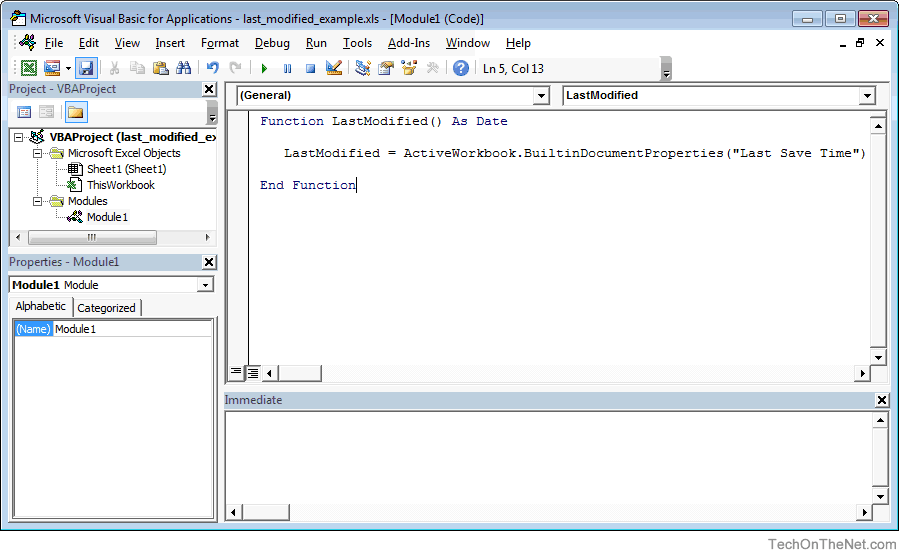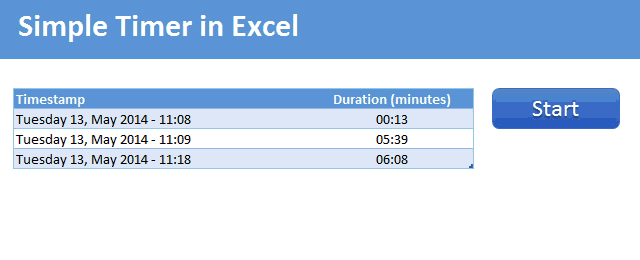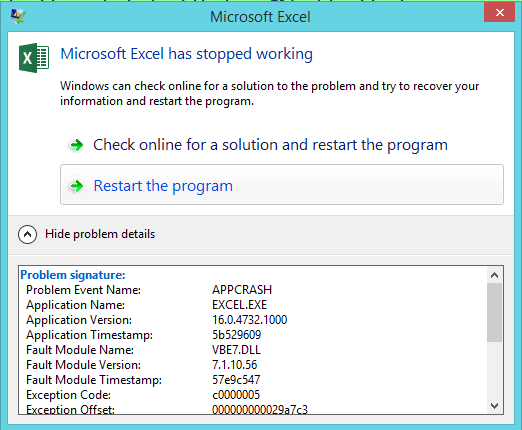

- #How to write a macro in excel for a timestamp how to#
- #How to write a macro in excel for a timestamp code#
The If statement in the following block of code examines the quantity argument and determines whether the number of items sold is greater than or equal to 100:

The argument names enclosed in parentheses, quantity and price, are placeholders for the values on which the calculation of the discount is based. When you press Enter, Excel looks for the name DISCOUNT in the current workbook and finds that it is a custom function in a VBA module. Let’s consider how Excel interprets this function procedure. Now you can copy the DISCOUNT formula to G8:G13 to get the results shown below. In the formula =DISCOUNT(D7,E7), D7 is the quantity argument, and E7 is the price argument. When you call the function in a worksheet cell, you must include those two arguments. In the first line of your VBA code, Function DISCOUNT(quantity, price), you indicated that the DISCOUNT function requires two arguments, quantity and price. Close the Visual Basic Editor, select cell G7, and type the following:Įxcel calculates the 10 percent discount on 200 units at $47.50 per unit and returns $950.00. Now you’re ready to use the new DISCOUNT function. A new module window appears on the right-hand side of the Visual Basic Editor.Ĭopy and paste the following code to the new module.ĭISCOUNT = Application.Round(Discount, 2) Press Alt+F11 to open the Visual Basic Editor (on the Mac, press FN+ALT+F11), and then click Insert > Module. To create a custom DISCOUNT function in this workbook, follow these steps: The example below shows an order form that lists each item, quantity, price, discount (if any), and the resulting extended price. In the following paragraphs, we'll demonstrate a function to calculate this discount. Suppose your company offers a quantity discount of 10 percent on the sale of a product, provided the order is for more than 100 units. To create functions and macros, you work with the Visual Basic Editor (VBE), which opens in a new window separate from Excel.
#How to write a macro in excel for a timestamp how to#
In this article, you’ll learn how to create and use custom functions. Certain kinds of statements, such as statements that select and format ranges, are excluded from custom functions. Second, they perform calculations instead of taking actions. That is, they start with a Function statement instead of a Sub statement and end with End Function instead of End Sub.

First, they use Function procedures instead of Sub procedures. They differ from macros in two significant ways. I try my best to help everyone out, but sometimes I don't have time to fit everyone's questions in (there never seem to be quite enough hours in the day!).Custom functions, like macros, use the Visual Basic for Applications (VBA) programming language. I can guarantee 9 times out of 10, one of my strategies will get you the answer(s) you are needing faster than it will take me to get back to you with a possible solution. I highly recommend that you check this guide out before asking me or anyone else in the comments section to solve your specific problem. That's why I want to share with you: My Guide to Getting the Solution to your Problems FAST! In this article, I explain the best strategies I have come up with over the years to getting quick answers to complex problems in Excel, PowerPoint, VBA, you name it! We all have different situations and it's impossible to account for every particular need one might have. How Do I Modify This To Fit My Specific Needs?Ĭhances are this post did not give you the exact answer you were looking for. To learn more about this function, you can view the code here. If you need a very specific timing mechanism to determine bottlenecks in your code, there is a VBA function that was written by Charles Williams called the MicroTimer.


 0 kommentar(er)
0 kommentar(er)
